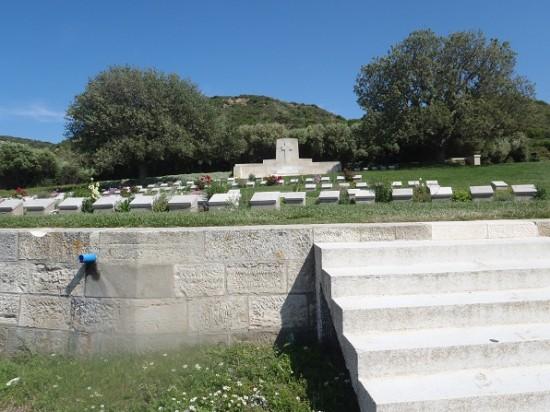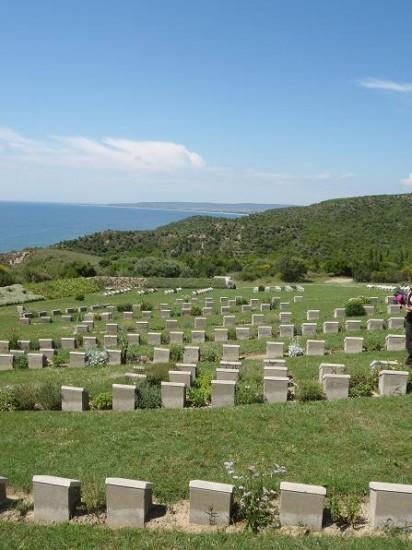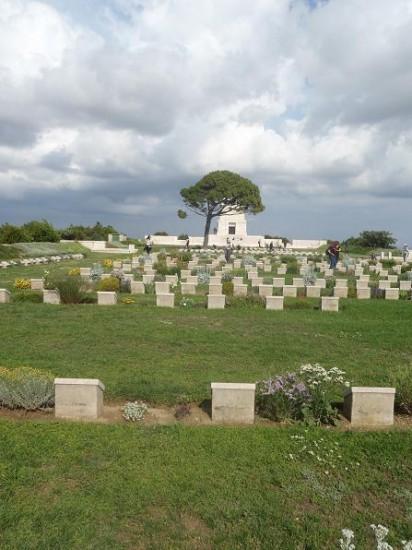Gallipoli Cemeteries 1915 to 2012
I recently had an opportunity to visit several of the cemeteries at Gallipoli. I found it interesting to see how they are now compared to how they looked in 1915 and thought I would share some images of plans and photographs of the cemeteries.
Shrapnel Valley Cemetery
Shrapnel Valley Cemetery (also known as Shrapnel Gully Cemetery, Military Burial Ground or West Monash Valley Cemetery) is the largest of the original 1915 cemeteries at ANZAC. It was established at the head of Shrapnel Valley, near a major thoroughfare to the front line.
The Beach (Hell Spit) Cemetery 1919 after it was 'remade' by the Turks in 1916. The same thing occured at Shrapnel Valley Cemetery.
After the evacuation the crosses were used for firewood by the remaining Turks and the cemetery vanished from view. When Pope Benedict XV sent an envoy to check on the cemeteries in 1916, the Turkish War Office remade Shrapnel Valley Cemetery so it appeared to be well-tended. They created burial mounds with rock borders, but these mounds did not match the direction of the original graves underneath. In 1919, when the Graves Registration Unit tried to find the graves, the 1915 plan of the cemetery helped them locate the general positions and directions of the graves underneath the remade cemetery.

Other than some isolated graves in Shrapnel Valley being moved to this cemetery, the layout today is very similar to what it was in 1915.
Ari Burnu Cemetery

Shell Green Cemetery
Shell Green Cemetery was originally 2 cemeteries - Shell Green 1 (in the south) and Shell Green 2 (in the north). Shell Green Cemetery 1 is still in its original position and is called "Plot 1". In the 1920s Shell Green 2 was moved and the bodies were reinterred next to Shell Green 1 and is now called Plot 2. In addition some smaller cemeteries were also moved into Shell Green Cemetery in the 1920s, including Artillery Road Cemetery and the post war Kilia Liman Cemetery.


1915 plans of Shell Green 1 Cemetery and Brown's Dip North and South Cemeteries
Brown's Dip Cemetery
The plan and photographs above show a cemetery which no longer exists in its original form. Brown’s Dip Cemetery was in the depression at the head of Victoria Gully on a major thoroughfare to the front line along Artillery Road, near Lone Pine. The cemetery contained the remains of 149 soldiers.
After the war, Brown’s Dip cemetery was initially identified to remain as a permanent cemetery. However, the site was unstable and prone to erosion and landslides. So in 1923 the soldiers at Brown’s Dip were moved to the new Lone Pine Cemetery where they were re-interred in the Brown’s Dip Plot.












